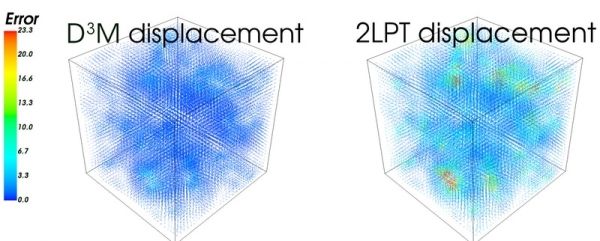For the first time, astrophysicists have used artificial intelligence techniques to generate complex 3D simulations of the universe. The results are so fast, accurate and robust that even the creators aren’t sure how it all works.
“We can run these simulations in a few milliseconds, while other ‘fast’ simulations take a couple of minutes,” says study co-author Shirley Ho, a group leader at the Flatiron Institute’s Center for Computational Astrophysics in New York City and an adjunct professor at Carnegie Mellon University. “Not only that, but we’re much more accurate.”
The speed and accuracy of the project, called the Deep Density Displacement Model, or D3M for short, wasn’t the biggest surprise to the researchers. The real shock was that D3M could accurately simulate how the universe would look if certain parameters were tweaked — such as how much of the cosmos is dark matter — even though the model had never received any training data where those parameters varied.
Read more at Simons Foundation
Image: A comparison of the accuracy of two models of the universe. The new model (left), dubbed D3M, is both faster and more accurate than an existing method (right) called second-order perturbation theory, or 2LPT. The colors represent the average displacement error in millions of light-years for each point in the grid relative to a high-accuracy (though much slower) model. S. He et al./Proceedings of the National Academy of Sciences 2019


